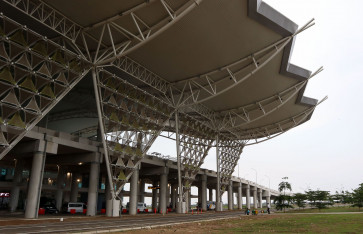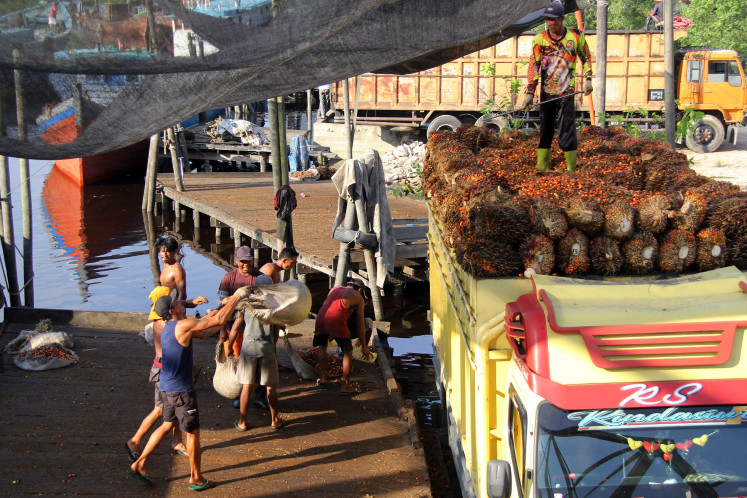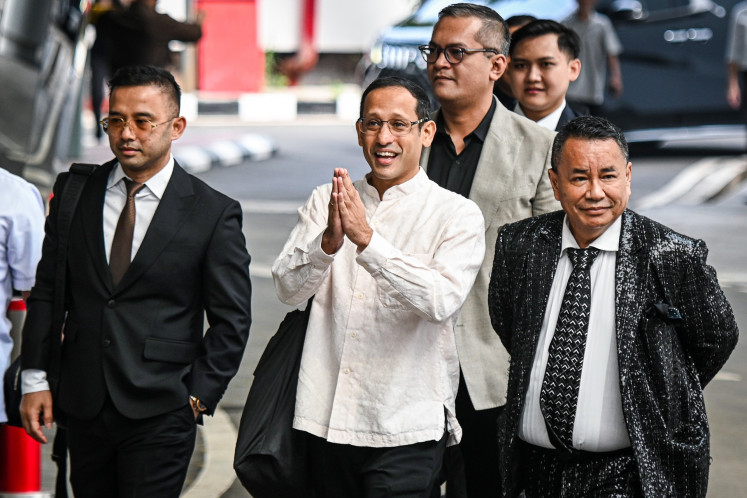Popular Reads
Top Results
Can't find what you're looking for?
View all search resultsPopular Reads
Top Results
Can't find what you're looking for?
View all search resultsGovt still gazing at the moon to set Idul Fitri
The Religious Affairs Ministry will determine the first day of Syawal, which marks the coming of Idul Fitri, through isbat, an annual meeting in which representatives of the countryâs Islamic organizations convene, on Thursday
Change text size
Gift Premium Articles
to Anyone
T
he Religious Affairs Ministry will determine the first day of Syawal, which marks the coming of Idul Fitri, through isbat, an annual meeting in which representatives of the country's Islamic organizations convene, on Thursday.
The government has decided that the isbat was still necessary despite Muhammadiyah, the country's second largest Muslim organization, having set the date of Idul Fitri for July 17.
'The meeting will be conducted after a breaking of the fast gathering. But before that, there will be presentations about the position of hilal [new moon] from the earth. The presenter will be the National Aeronautics and Space Agency [LAPAN],' the ministry's secretary-general, Nur Syam, told The Jakarta Post on Tuesday.
There is a possibility that the government will set a different Idul Fitri day than the one proclaimed by Muhammadiyah due to a difference of method in determining the date.
Muhammadiyah relies on hisab, or astronomical calculations to determine Ramadhan and Idul Fitri every year, while the government uses a method combining astronomical calculations with old-fashioned sighting of the moon, called rukyah, the method that is also adopted by the Nahdlatul Ulama (NU), the country's largest Islamic group.
In the past five years, the government, which has always been supported by NU, and Muhammadiyah have only counted one different Idul Fitri date. This occurred in 2011, when Muhammadiyah had the date set a day earlier.
According to the government method, it is not necessary to experience a physical sighting of the new moon if the crescent reaches the criteria agreed upon by the MABIMS (the Association of the Ministries of the Religious Affairs from Brunei Darussalam, Indonesia, Malaysia and Singapore).
The new moon needs to be physically sighted only if the height of the moon when the sun goes down is less than +02 degree.
'The Religious Affairs Ministry has been conducting a series of dialogues [to bridge the differences between NU and Muhammadiyah] and we have done research to bring the two methods closer.' Nur said.
Despite the government's efforts, both groups agreed that it was extremely difficult to have a one-size-fits-all national Islamic calendar due to the deep-rooted differences between the two organizations' approaches.
NU often quotes the hadith (the compilation of the sayings and deeds of the Prophet Muhammad) that states 'Fast if you see the new moon and break the fast [celebrate Idul Fitri] if you see the new moon'.
'The hadith is clear,' NU executive council chairman Slamet Effendy Yusuf told the Post. 'Usually, Muhammadiyah closely follows the hadiths, while NU usually prefer hadiths that have been interpreted. [In the calendar case] it is the other way around. The NU is the one that sticks to the hadith, while we can say that the Muhammadiyah ignores the hadith altogether and relies primarily on hisab.'
Muhammadiyah chairman Din Syamsuddin said that the word 'see' in the hadith should not be interpreted literally.
'There are others who understand rukyah as having an opinion, not only seeing,' he said, which was why it was alright to set the date on Idul Fitri even if the crescent could not be seen, as long as it had been formed.










